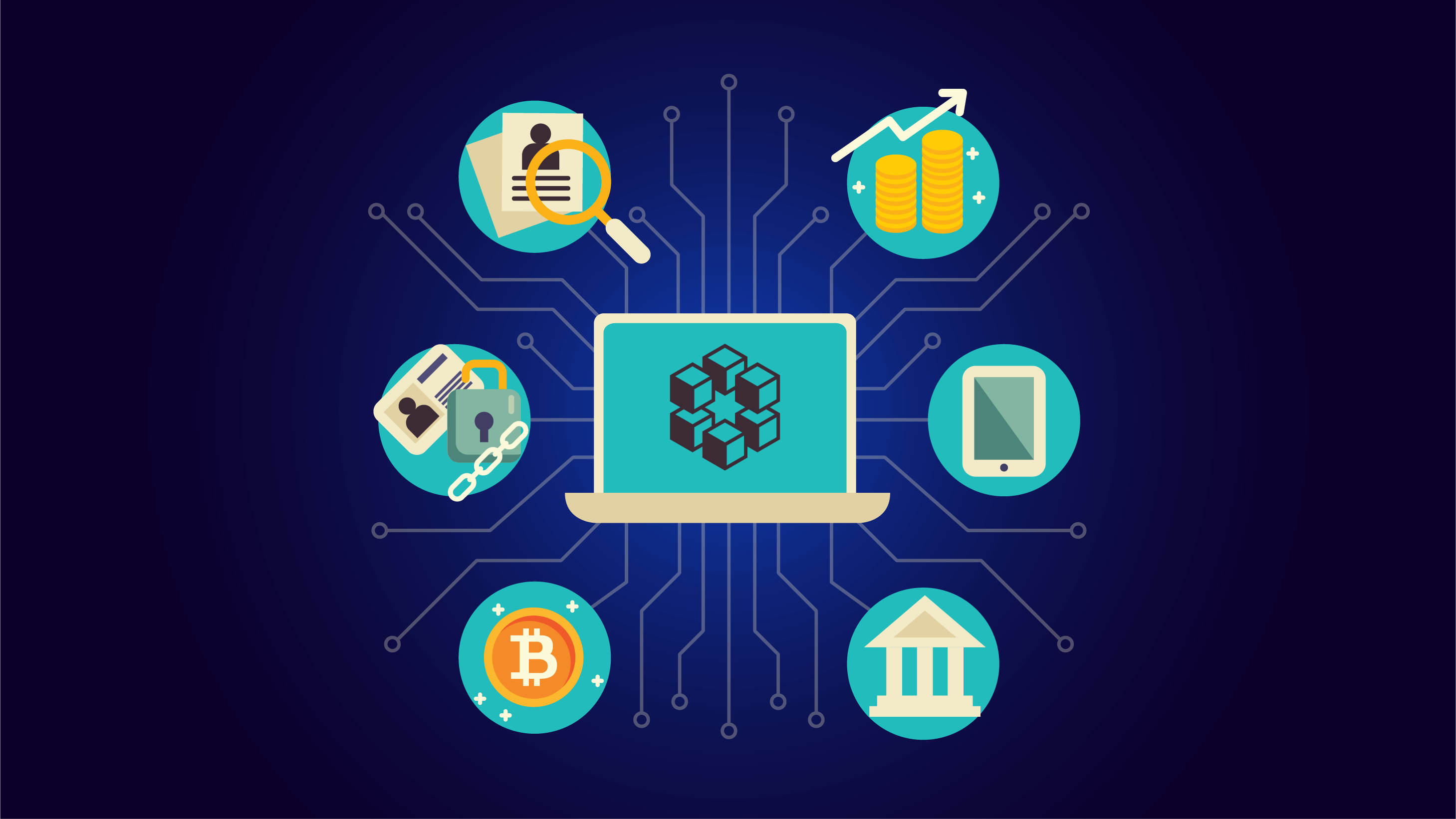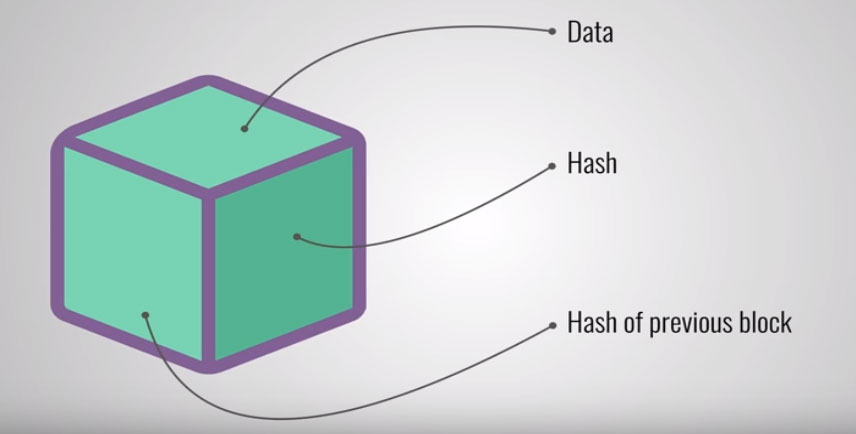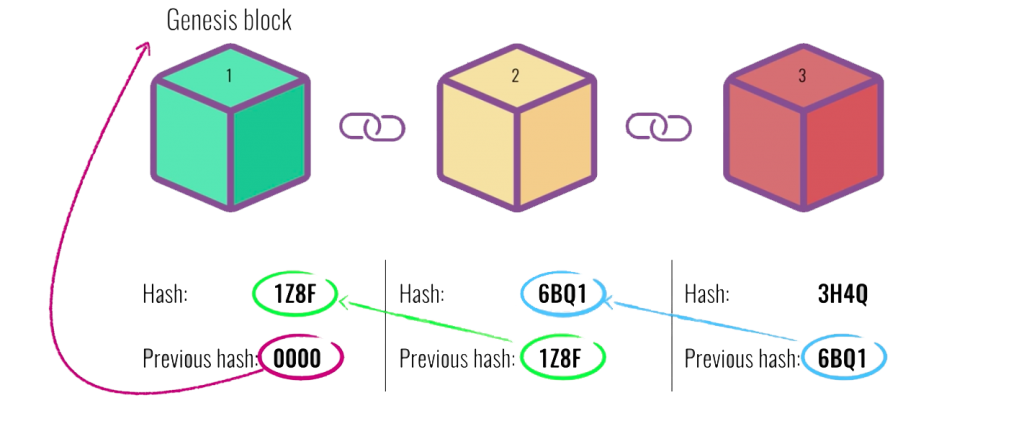
Why is Blockchain so popular? Why Blockchain is widely applied in many fields, especially in the field of cryptocurrency? HotQA will help you quickly understand Blockchain through the most basic and understandable terms. Let’s start!

Blockchain technology – Simply explained
Blockchain is a system of recording information in a way that makes it difficult or impossible to change, hack, or cheat the system. A blockchain is essentially a digital ledger of transactions that is duplicated and distributed across the entire network of computer systems on the blockchain
The birth of blockchain has created a new direction for the world’s technology – finance industry, the world of blockchain technology.
Or you can also understand, blockchain is like a public accounting ledger, in which, all information is stored and transmitted transparently, completely, cannot be changed or cheated. This is a new technology, which greatly improves the limitations of the traditional way of storing and exchanging information. Therefore, blockchain is increasingly being applied in many fields: economic and financial, education, agriculture, industry, entertainment, health or education.
Blockchain Principles
In order to understand the details of how they work, we need to learn the concepts in turn.
Blockchain Data Structure
The data information will be stored in blocks. Except for the first block (Genesis block), each block will have a structure of data, Hash code and Hash code of the previous block to mark. Once a block of data is encrypted, it is nearly impossible to change the information in the block. This is one of the things that makes this technology different.

The blocks are linked together, you can imagine a model of a train with numbered carriages connected together.

What is Node?
Once you understand data structures, the next concept you need to know is Node.
Node is considered as a device on the Blockchain network. Node is the foundation that allows Blockchain technology to work and exist. Nodes are distributed in a large network and perform many different tasks.
A node can be any device (computer, phone, printer, etc.), provided they are connected to the internet and have an IP address. Simply speaking, a Node is a point where a message will be created, received or transmitted. All nodes on the blockchain are connected to each other and constantly exchange information so that the nodes are quickly updated.
Working Mechanism of Blockchain
Nodes will perform cryptographic operations and store data blocks, so what motivates members of the Blockchain network to participate in the operation of Nodes?
The answer is the reward from closing data blocks. With the PoW consensus mechanism used for Bitcoin and some coins, when the Nodes solve the math and find the appropriate Hash to close the block, a reward of money will be given to that person. We often see “Bitcoin mining farms” operating with many computers running continuously with the goal of receiving rewards. The miners themselves also contribute to the operation of the system.

There is another mechanism used quite a lot today is POS (Proof of Stake), you can learn about PoS through the article:
What Is Staking in Crypto? A Beginner’s Guide to Staking Crypto
As you can see, by virtue of the decentralized Node network as well as the operating mechanisms, Blockchain offers a lot of potential for practical applications.
3 Popular Consensus Algorithms of Blockchain
1. Proof of Work (PoW)
This consensus algorithm is used to select a miner for the next block generation. Bitcoin uses this PoW consensus algorithm. The central idea behind this algorithm is to solve a complex mathematical puzzle and easily give out a solution. This mathematical puzzle requires a lot of computational power and thus, the node who solves the puzzle as soon as possible gets to mine the next block. Considered as the first consensus algorithm, associated with Bitcoin (BTC), Ethereum (ETH), …
2. Proof of Stake (PoS)
This is the most common alternative to PoW. Ethereum has shifted from PoW to PoS consensus. In this type of consensus algorithm, instead of investing in expensive hardware to solve a complex puzzle, validators invest in the coins of the system by locking up some of their coins as stake. After that, all the validators will start validating the blocks. Validators will validate blocks by placing a bet on it if they discover a block which they think can be added to the chain. Based on the actual blocks added in the Blockchain, all the validators get a reward proportionate to their bets and their stake increase accordingly. In the end, a validator is chosen to generate a new block based on their economic stake in the network. Thus, PoS encourages validators through an incentive mechanism to reach to an agreement.
3. Proof of Authority (PoA)
That reputation-based consensus algorithm is Proof of Authority (PoA for short). Block verifiers will not be based on the number of coins they hold, but on their own reputation. So PoA Blockchains are secured by arbitrarily selected validating nodes as trusted entities. Typical projects using BFT algorithm such as: MakerDAO (xDAI), ZINC (ZINC), …
Advantages and disadvantages of Blockchain
Advantages
- Open: One of the major advantages of blockchain technology is that it is accessible to all means anyone can become a participant in the contribution to blockchain technology, one does not require any permission from anybody to join the distributed network.
- Verifiable: Blockchain technology is used to store information in a decentralized manner so everyone can verify the correctness of the information by using zero-knowledge proof through which one party proves the correctness of data to another party without revealing anything about data.
- Permanent: Records or information which is stored using blockchain technology is permanent means one needs not worry about losing the data because duplicate copies are stored at each local node as it is a decentralized network that has a number of trustworthy nodes.
- Tighter Security: Blockchain uses hashing techniques to store each transaction on a block that is connected to each other so it has tighter security. It uses SHA 256 hashing technique for storing transactions.
- Immutability: Data cannot be tampered with in blockchain technology due to its decentralized structure so any change will be reflected in all the nodes so one cannot do fraud here, hence it can be claimed that transactions are tamper-proof.
Disadvantages
- Scalability: It is one of the biggest drawbacks of blockchain technology as it cannot be scaled due to the fixed size of the block for storing information. The block size is 1 MB due to which it can hold only a couple of transactions on a single block.
- Energy Consuming: For verifying any transaction a lot of energy is used so it becomes a problem according to the survey it is considered that 0.3 percent of the world’s electricity had been used by 2018 in the verification of transactions done using blockchain technology.
- Time-Consuming: To add the next block in the chain miners need to compute nonce values many times so this is a time-consuming process and needs to be speed up to be used for industrial purposes.
- Legal Formalities: In some countries, the use of blockchain technology applications is banned like cryptocurrency due to some environmental issues they are not promoting to use blockchain technology in the commercial sector.
Blockchain Technology Applications for Industry 4.0
Nobody would dispute the fact that Blockchain is a high potential investment opportunity as well as opening the door to other applications. These applications include:
- Trade and Buy/Sell digital assets
- Legal contract
- Medical record
- Other digital documents in the industry
Through the above article, HotQA hopes that you have gained more knowledge about Blockchain technology, including understanding what Blockchain is, the working principle of Blockchain, the advantages and disadvantages of Blockchain as well as Blockchain can be applied can be used in many different areas of life. Follow HotQA Hub to read many useful articles and information about Blockchain technology and cryptocurrency!






